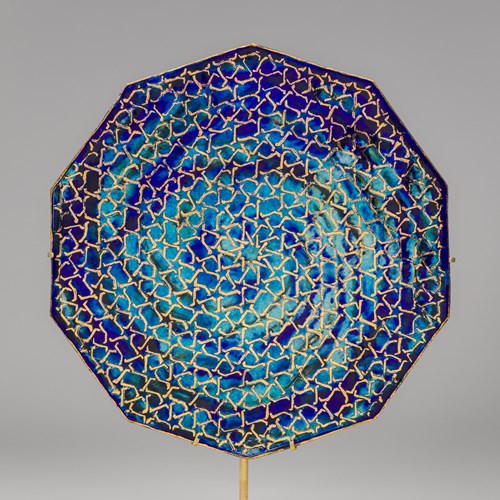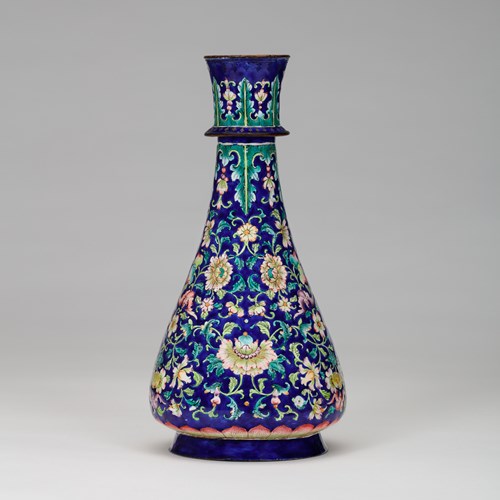Marketplace
Ottoman Silk Coverlet (Yorgan Yüzü)
A vibrant blue, white, and green embroidred tree of life grows out of a European-style urn, contrasting with the orange silk canvas. A range of textures is achived by the use of different stitches, including French knots for the flowers and chain stitch for the leaves. Textiles of this size were often used as quilt covers (yorgan yüzü) or wall hangings to keep the home warm in winter. The rich silks were also used as ostentatious status symbols. The Sünnet, or circumcision ceremony, was an occasion to display a family’s most precious textiles. Celebrated in the women’s quarters, a professional would come to the home to dress a bed with canopies and covers.1 The ‘Cosmic Tree’ or ‘Tree of Life’ is a concept in pre-Islamic Turkish mythology whereby a baby is likened to the world and the umbilical cord to a tree. Perhaps this association with new life is why the tree motif was so popular in this ceremony.2
By the mid-eighteenth century, European styles were increasingly fashionable in the Ottoman world. Brightly-coloured silks embroidered with large trees growing from vases, bouquets of flowers, and large bows, became fashionable.3 An example of a large yellow silk (228.6cm x 172.7cm) in the Cleveland Museum of Art (accession no. 1916.1358) is decorated with a large tree of life with a bow. A red silk decorated with another tree of life in gold appliqué and embroidery is in the International Quilt Museum, University of Nebraska-Lincoln (accession no. 2023.014.0007) measures 226 x 163 cm.
n.b. accession nos are clickable links
1 Taylor, Roderick. Ottoman Embroidery. Wesel: Uta Hülsey, 1993. p. 110.
2 Can, Mine. ‘Tree Motifs in Turkish Embroidery Art’, Contemporary Issues in Arts (2015). pp. 292-301.
3 Mackie, Louise W. Symbols of Power: Luxury Textiles from Islamic Lands, 7th-21st Century. Cleveland; New Haven: Cleveland Museum of Art; Yale University Press, 2015. pp. 336-7.
More artworks from the Gallery


_T638682403756763695.jpg?width=2000&height=2000&mode=max&scale=both&qlt=90)





, the 10th Susuhunan of Surakarta_T637044844156194560.jpg?width=500&height=500&mode=pad&scale=both&qlt=90&format=jpg)
